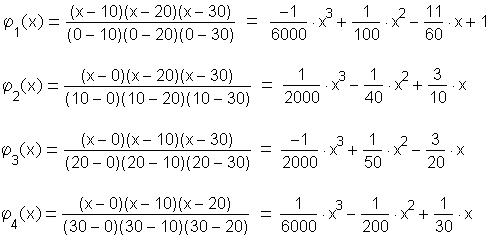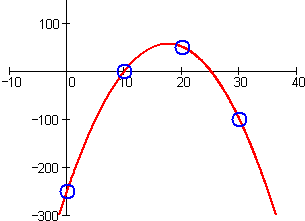
Lagrange Interpolation Polynomials
If we wish to describe all of the ups and downs in a data set, and hit every point, we use what is called an interpolation polynomial. This method is due to Lagrange.
Suppose the data set consists of N data points:
The interpolation polynomial will have degree
where the functions

Don't fret! This is easier than it looks. The key thing to notice is that the numerator of
Now notice:
If this seems like smoke and mirrors, consider a simple example. Here's the data for g again:
| x | g(x) |
| 0 | –250 |
| 10 | 0 |
| 20 | 50 |
| 30 | –100 |
In this case there are

Multiplying each of these by the appropriate
![]()
The cubic terms cancel, and we arrive at a simple quadratic description of the data.
A quick plot of the data together with the polynomial shows that it indeed passes through each of the data points:

For an interactive demonstration of Lagrange interpolation polynomials, showing how variations in the data points affect the resulting curve, go here.